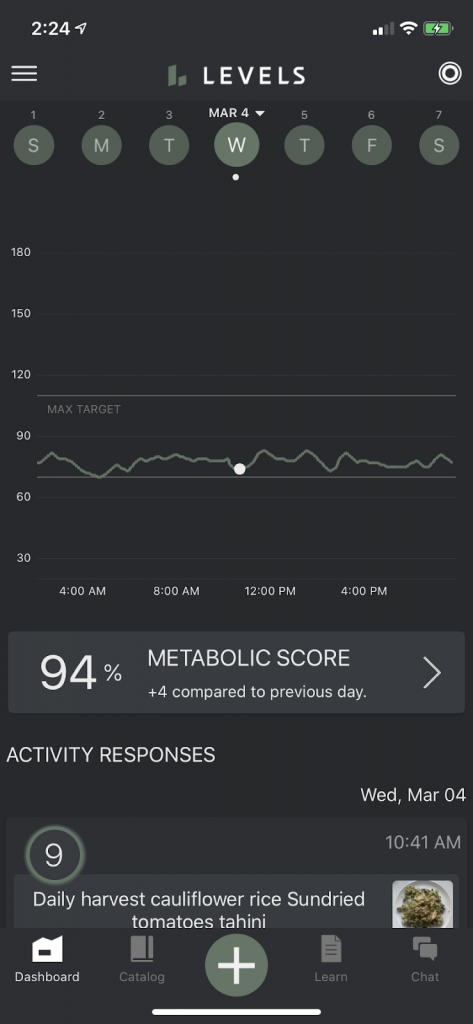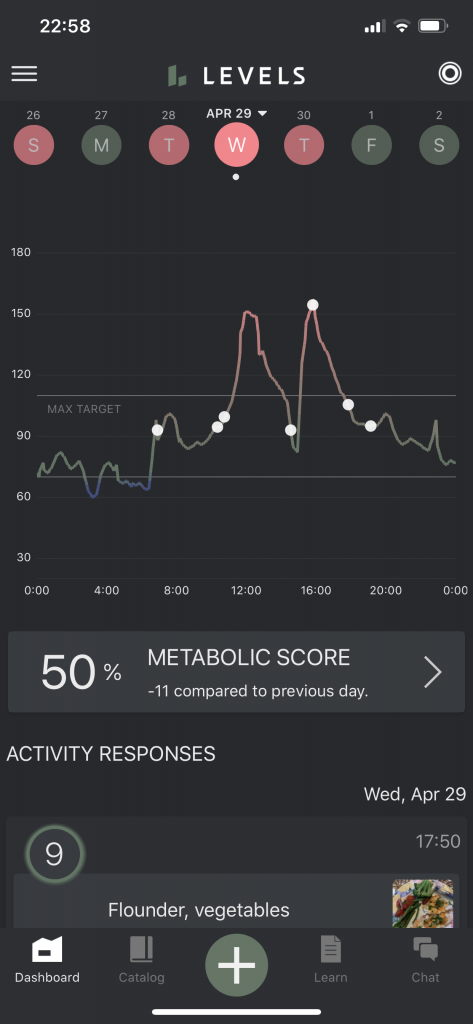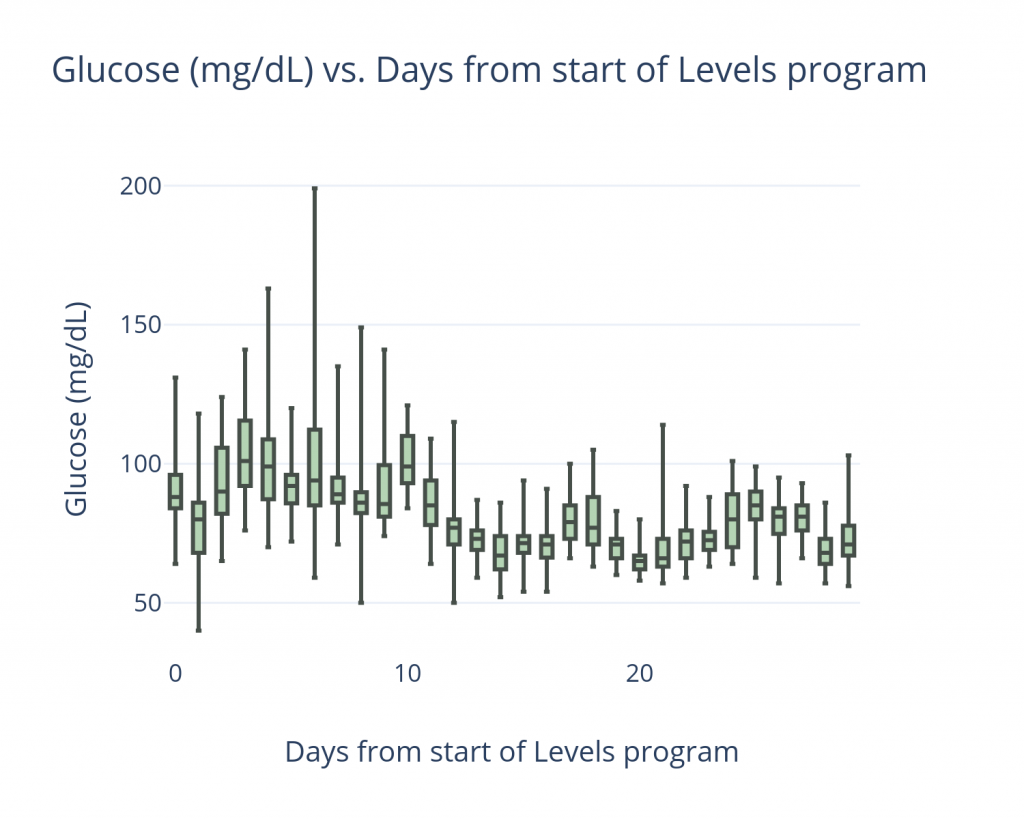Why would someone want to improve their metabolic fitness?
???????????????????? ???????????? ???????????????????????????????????????? ???????? ???? ???????????????????????????????????? ????????????????!!
Dr. Sunshine says metabolic fitness is a big, giant plus. If we make daily choices that support metabolic processes, we will adapt to develop better metabolic fitness – which is the way you want to go.
Why? How? Read on, and bring your questions in to Dr. Sunshine. If you’re a Direct Primary Care patient on the Sunshine Wellness Plan, ask all your questions in our private Facebook group (or you can text him personally, of course)!
OC Sports & Wellness Membership Circle
Metabolism is the set of cellular mechanisms that generate energy from our food and environment in order to power every single cell in the body. When these energy-producing pathways are running smoothly, this represents optimal metabolic fitness.
Since all cells in the body require energy to function, metabolic fitness is foundational for a wide range of diverse health benefits.
Why would someone want to improve their metabolic fitness?
- Stable and sustained energy throughout the day
- Sharp memory and recall
- Sustained exercise endurance
- Fat burning ability and healthy weight
- Stable mood decreased anxiety and depression
- Clear skin and decreased wrinkles
- Improved fertility
- Improved sexual health
- A high functioning immune system
- Lower risk of chronic diseases like diabetes, Alzheimer’s disease, obesity, fatty liver disease, heart disease, stroke and more
Why do we call it “metabolic fitness” instead of “metabolic health?”
Fitness is not an inherent characteristic or something that “happens to us.” Rather, fitness is something that can improve when we put in consistent work and training. And just like with physical fitness, metabolic fitness improves when we put in the effort.
Let’s take the analogy of starting a running program to improve our physical fitness in order to run a marathon. Our first jog isn’t going to be 26.2 miles; it’s likely going to be a short slog. But, as we lace up our shoes each day, hit the pavement, and track our progress over time, we see and feel progress. We notice small adaptations in our bodies: our breathing might get easier as we sprint up hills, our muscles become more defined, maybe our mood improves. We might track our mileage in Strava or our heart rate with a Fitbit and get excited as these metrics start to improve. As the weeks of running progress, it is clear that our physical fitness is improving.
On the flip side, if we decide to take a few months off from training, it’s likely that physical fitness will decline: those hard-earned muscles may diminish, and we’d likely feel more winded the first time we get back out there.
The metabolism is no different. If we make daily choices that support metabolic processes, we will adapt to develop better metabolic fitness. We might not see our muscles grow, but inside our bodies, the microscopic machinery involved in converting fat and glucose to energy becomes more efficient. While becoming physically fit requires consistent exercise, becoming metabolically fit involves consistent smart decisions about diet (including what to eat, when to eat, and how to pair foods), sleep, stress management, physical activity, and exposure to metabolism-disrupting environmental toxins. Our current level of metabolic fitness is highly dynamic and largely in our control.
Just like we can track metrics of physical fitness to keep us informed, on-track, and motivated, we can also now track our metabolic fitness. Since glucose is the primary energy building block for our metabolism, tracking this biomarker with a continuous glucose monitor (CGM) can give us useful insight into our level of metabolic fitness.
With a CGM, we can see in real-time how our diet and lifestyle decisions are affecting our glucose levels, knowing that over time, stable and healthy glucose patterns lead to improved metabolic fitness. Using the insights from a CGM can help us modulate our food and lifestyle choices to accelerate metabolic progress.
And, just like with physical fitness, we can see meaningful improvements in our lives even if we haven’t won an Olympic gold medal. Fitness is a spectrum and each small amount of improvement is a win. As with most processes in the body, there is not an “on-off” switch for metabolic health. We are not either “healthy” or “unhealthy.” Rather, we are on a metabolic continuum, and our choices — coupled with our genes — determine where we stand each day.
How does glucose fit in?
Glucose is a simple sugar that is a breakdown product of the carbohydrates that we eat. When glucose enters the bloodstream, it signals to the pancreas to release insulin, a hormone that tells cells to absorb glucose. Some of this glucose is processed by the mitochondria to form energy (called ATP) that our cells can use. Excess glucose is stored in the muscle and liver as glycogen, and can also be converted to triglycerides and stored in fat cells.
When our bodies need energy, we can tap into glucose from the bloodstream, stored glycogen in the muscles or liver, or we can even make new glucose from other compounds like amino acids (breakdown products of proteins). Aside from using glucose for making energy, we can also break down stored fat to make energy, and convert protein breakdown products to energy.
However, when our bodies are taxed with processing too much dietary glucose over long periods of time, it throws off the balance of these processes and leads to health problems. First, chronic excess glucose causes the repeated release of insulin. High levels of insulin can, over time, cause cells to become “numb” to insulin’s effect, a process called insulin resistance. When this happens, less glucose can get into the cells, so circulating glucose rises. Second, high insulin levels block stored fat from being broken down and used for energy. So, ironically, too much energy in the form of glucose leads us to have more trouble using energy effectively.
Aside from these issues, excess glucose in the bloodstream causes inflammation (immune activation), oxidative stress (an overabundance of damaging free radicals in the body), and glycation (glucose getting “stuck” to things in the body and causing dysfunction).
Given how many deleterious effects excess glucose can have, it is not surprising that the majority of common chronic diseases are rooted in poor glucose control, including diabetes, obesity, heart disease, stroke, dementia, infertility, and more. This is a relatively modern phenomenon: we used to die of infectious disease and starvation. Now we die of metabolic related disease.
Why might that be? For starters, we (on average) eat nearly 10x more sugar per day than we did 100 years ago. Many of us don’t even realize it, because sugar is so ubiquitous in our food culture, and it wears many masks (link: 56 names for sugar). Imagine a factory getting 10x more shipments of raw material and trying to just “make it work.” It wouldn’t. The factory would fall apart. The machines would break. The workers would resist to protect themselves. This is what is happening to our bodies. Additionally, too much dietary fat can impair glucose processing; in fact, excess saturated fat impairs the function of the insulin receptor, leading to more circulating glucose.
In short, excess energetic precursors like glucose and fat gum up our bodies’ machinery, and are at the root of a vast amount of disease and suffering globally.
Currently, only 12% of Americans are metabolically healthy. The other 88% display one or more features that indicate that they have metabolic dysfunction and that their bodies are not able to utilize and process fat and carbohydrates efficiently. In this research study, to be considered “metabolically healthy,” you had to have normal blood glucose, triglycerides (a form of fat that is generated from excess glucose), high-density lipoprotein cholesterol, blood pressure, and waist circumference, without the need for medications.
The many faces of poor metabolic fitness
What does metabolic dysfunction and poor metabolic fitness look like? It can be both overt and subtle.
Overtly, metabolic dysfunction looks like obesity (dysfunctional fat storage), insulin resistance and diabetes (dysfunctional glucose processing), non-alcoholic fatty liver disease (dysfunctional management of glucose and fat in the liver), cancer (cancer cells thrive on excess sugar), Alzheimer’s disease (now being called type 3 diabetes, with evidence of insulin resistance in the brain), cardiovascular diseases like heart attack and stroke (damage to vessels from inflammation and excess glucose), and chronic kidney disease (vessels of the kidney impaired by excess glucose).
But more subtly, lack of metabolic fitness can look like the full spectrum of daily pain points of modern living that keep us from reaching our full potential and goals: fatigue, brain fog, depression, anxiety, lack of exercise endurance, infertility, balding, erectile dysfunction, acne, chronic pain, increased appetite, and more.
The key is this: since every cell type needs energy to function, metabolic dysfunction doesn’t discriminate. When our metabolic fitness is poor, the effects can be vast and diverse, subtle and overt.
How glucose tracking can tell you if you are metabolically fit or unfit
Metabolic fitness can be determined by tracking glucose patterns.
Good metabolic fitness looks like:
- Minimal rise of glucose after meals
- A quick return of glucose to baseline after meals
- Maintaining 24-hour glucose levels in a fairly narrow and healthy range
- Keeping fasting glucose (glucose levels measured after consuming no calories for at least 8 hours) in a healthy, low-risk range

More details on healthy glucose ranges in: What should your glucose levels be? Here’s the ultimate guide to healthy blood sugar ranges
Poor metabolic fitness looks more erratic, spiky, and elevated. Some of this might relate to our body’s response to insulin, knowing that excessive exposure to glucose and fats can promote insulin resistance. When our cells become insulin resistant, they have more difficulty taking up glucose, so we may see:
- Higher glucose peaks after meals
- Longer time period of elevated glucose after meals
- Morning glucose levels higher than desired
- “Basal” glucose (the glucose level in between meals) is high
- More up-and-down glucose variability during the day

The first step in improving metabolic fitness
The first step to improving metabolic fitness is tracking it, and glucose monitoring is the best and most easily accessible tool for this job. Given that there are diverse and contradictory health and dietary messages coming at us from all angles, it can be helpful to have an objective data stream that tells us continuously whether we are staying on track in keeping glucose stable.
By tracking glucose, we can identify how food and lifestyle choices are directly impacting our health, with a closed feedback loop that fosters rapid learning and ability to modulate. People can have very different glucose responses to the exact same food, so knowing how you are personally affected by a particular meal is key.

There are many strategies for improving metabolic fitness, ranging from eating less refined foods, to pairing carbohydrates with protein, to exercise, to engaging in a mindfulness practice. With CGM biofeedback, you can identify in real time what specifically works for you.
How is metabolic fitness measured?
Metabolic fitness is measured with a continuous glucose monitor paired with the Levels software and proprietary algorithms. The Levels software takes glucose data and generates composite metrics that take into account multiple features of the raw numbers, merging them into a relevant, understandable, and actionable number that can be used to guide choices.

A real Levels customer improved metabolic fitness from 56 to 78 over the course of a 4 week program. Additionally, his percent time in target (represented by red or green blocks) improve significantly over the 4 weeks.
Levels’ metabolic fitness score takes into account key markers of metabolic health that researchers have found to correlate with better metabolic health, including indices of glycemic variability and glucose median.
The higher the number, the better your day went metabolically. Behaviors like walking after meals, eating fiber, and regular exercise will likely contribute to better scores. If you didn’t sleep well, or ate foods that spike your blood sugar, you may find your metabolic fitness score lower, between 40 and 60. The average Levels user has a metabolic fitness score between 70 and 80.
Glucose variability is mostly affected by dietary choices. Earlier in the Levels program, blood glucose tends to be more variable as users experiment with how they respond to their favorite foods. As users progress through the program, and learn what foods and lifestyle activities promote more stable glucose, spikes tend to be fewer and lower, and the metabolic fitness score will improve.

Median glucose is affected by basal glucose, which will be the glucose levels that you hang out at when you are in between meals or asleep, timepoints not generally picked up by standard tools to measure glucose, like single time point fingerstick measurements.
Why now?
Previously, we mentioned that current research shows that 88% of Americans are not metabolically healthy. What’s more, 71.6% of the US are overweight or obese, 120 million Americans are living with diabetes and prediabetes, and 25-40% of the US suffers from largely preventable non-alcoholic fatty liver disease (NAFLD). Why are we seeing such high rates of poor metabolic fitness and its downstream consequences? Our genetic code has not appreciably changed in the time that these diseases have become epidemic, but our lifestyles are unrecognizable as compared to prior centuries.
Some reasons for our poor metabolic fitness (all of which are modifiable in our individual lives):
- Chronic “overnutrition”: We are exposed to a vastly increased amount of food than ever before in history, and our cellular factories haven’t evolved to cope with this level of incoming energy. We eat nearly 10x more sugar per day than we did 100 years ago. This stimulates the pancreas repeatedly to make insulin (the hormone that helps cells take up glucose), and the cells eventually become numb to this hormone. The liver becomes dysfunctional as excess glucose is converted to fat and stored in it, and the muscles become insulin resistant and unable to use glucose effectively.
- We are more sedentary than ever.
- We seem to get less sleep, which has significant consequences for our ability to process energy.
- Our environmental and synthetic toxin exposure impairs the mitochondria and metabolism.
- The majority of energy intake among individuals in the US comes from ultra-processed foods and beverages.
- The experience of psychological stress appears to be increasing, which creates a hormonal cascade that promotes storage, rather than use, of energy.
- Eating late at night and snacking frequently — common practices in modern life — can result in higher levels of insulin that block fat usage for energy in the body.
Reminders
Metabolic fitness takes practice.
Developing metabolic fitness requires effort and repetition. Just like the process of improvement in athletics, martial arts, meditation, or any other practice, consistency is key. With the Levels Program you can now access your biometric data in real-time and the initial results may surprise you.
We can all improve.
Some of us are closer to our metabolic goals than others, but no one is perfectly metabolically fit. The body is a dynamic machine and metabolic optimization is a daily, continual process. Levels helps you hone your health and wellness no matter where your starting point.
You are in control.
Your metabolic fitness level is not a predetermined trait, it’s a description of your current state: constantly in flux and always modifiable. With real time metabolic feedback and insights, you can make simple, informed decisions each day that can improve the metrics that define your metabolic fitness. Your data is the evidence.
Reference: {https://www.levelshealth.com/blog/the-ultimate-guide-to-metabolic-fitness}




